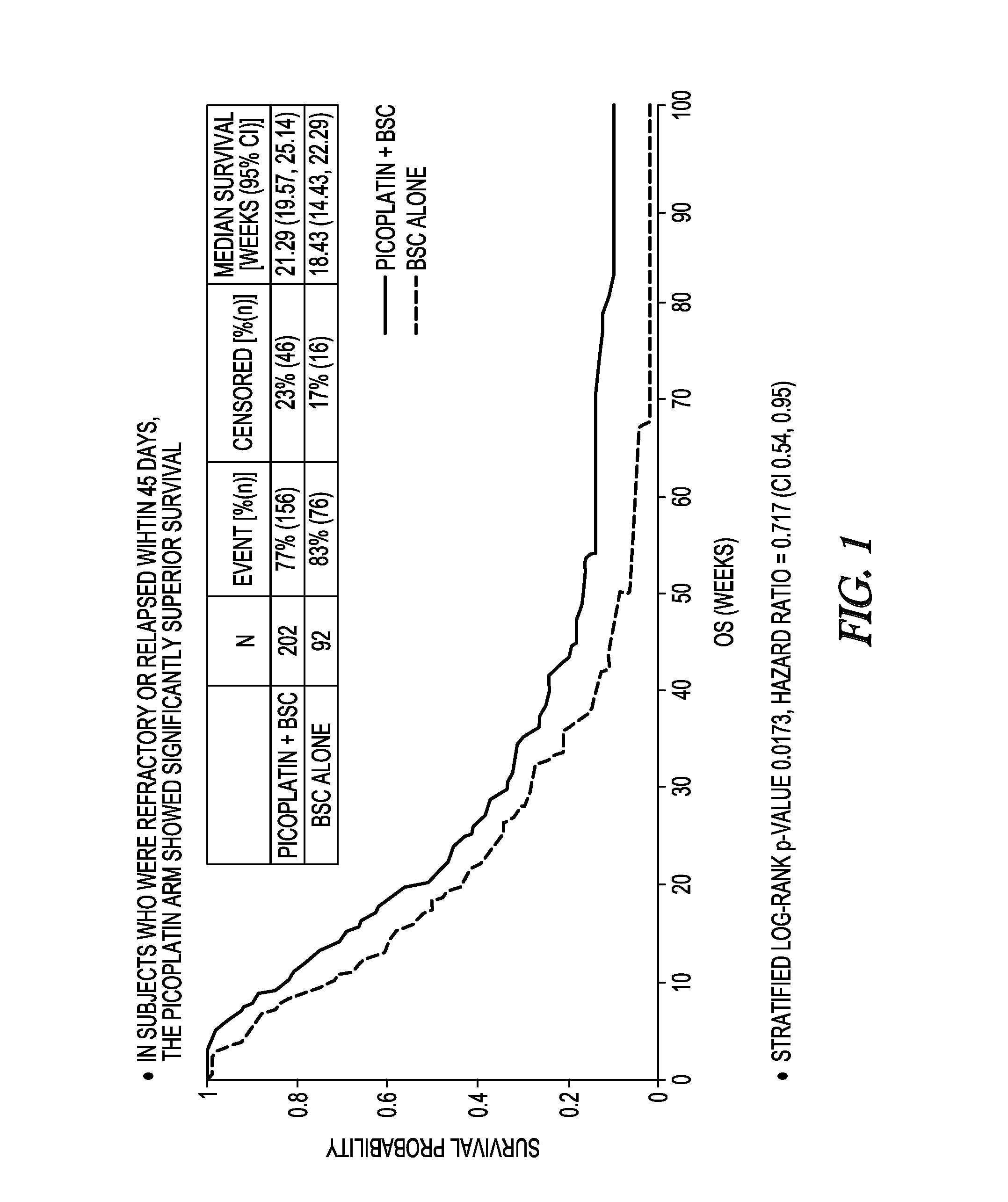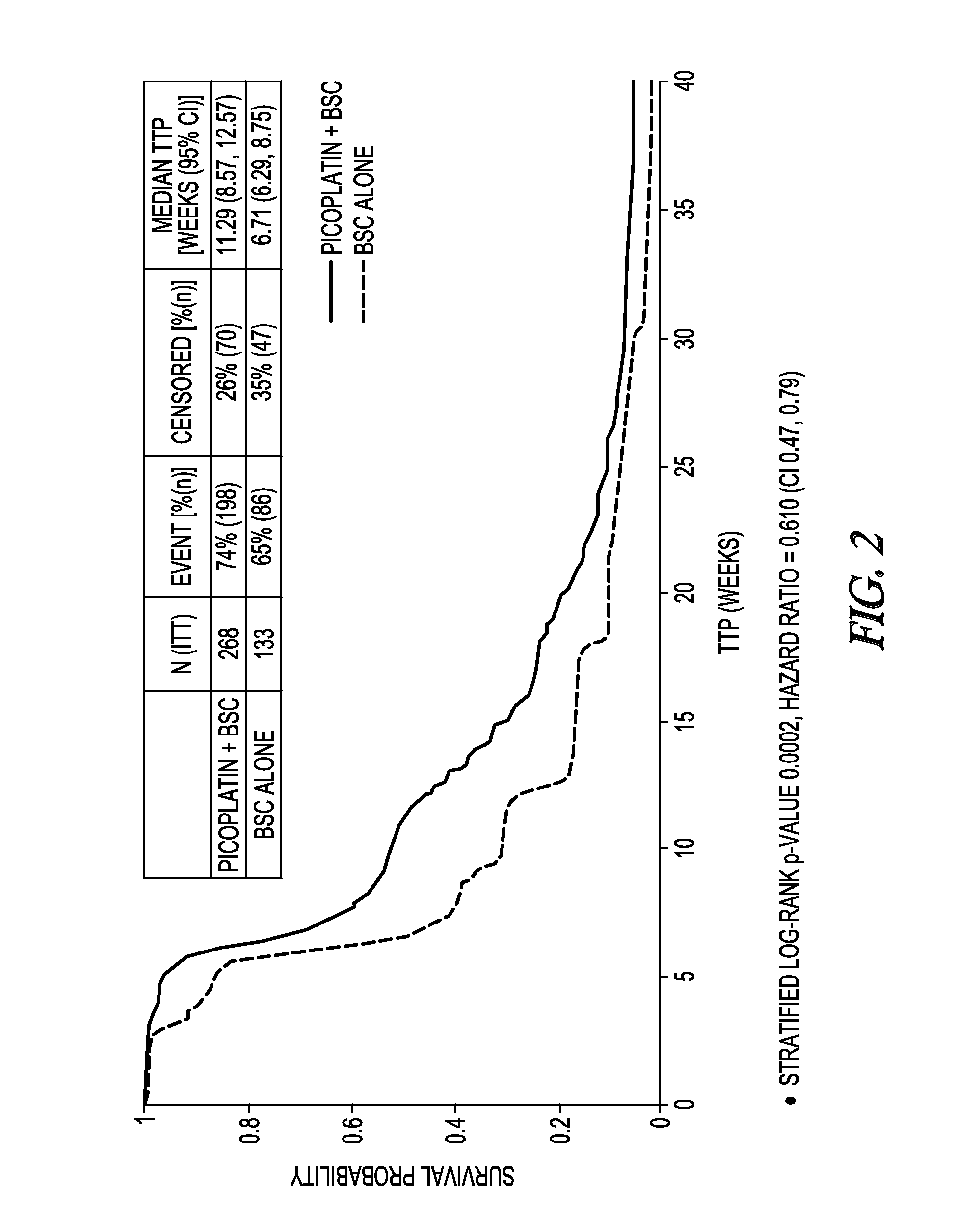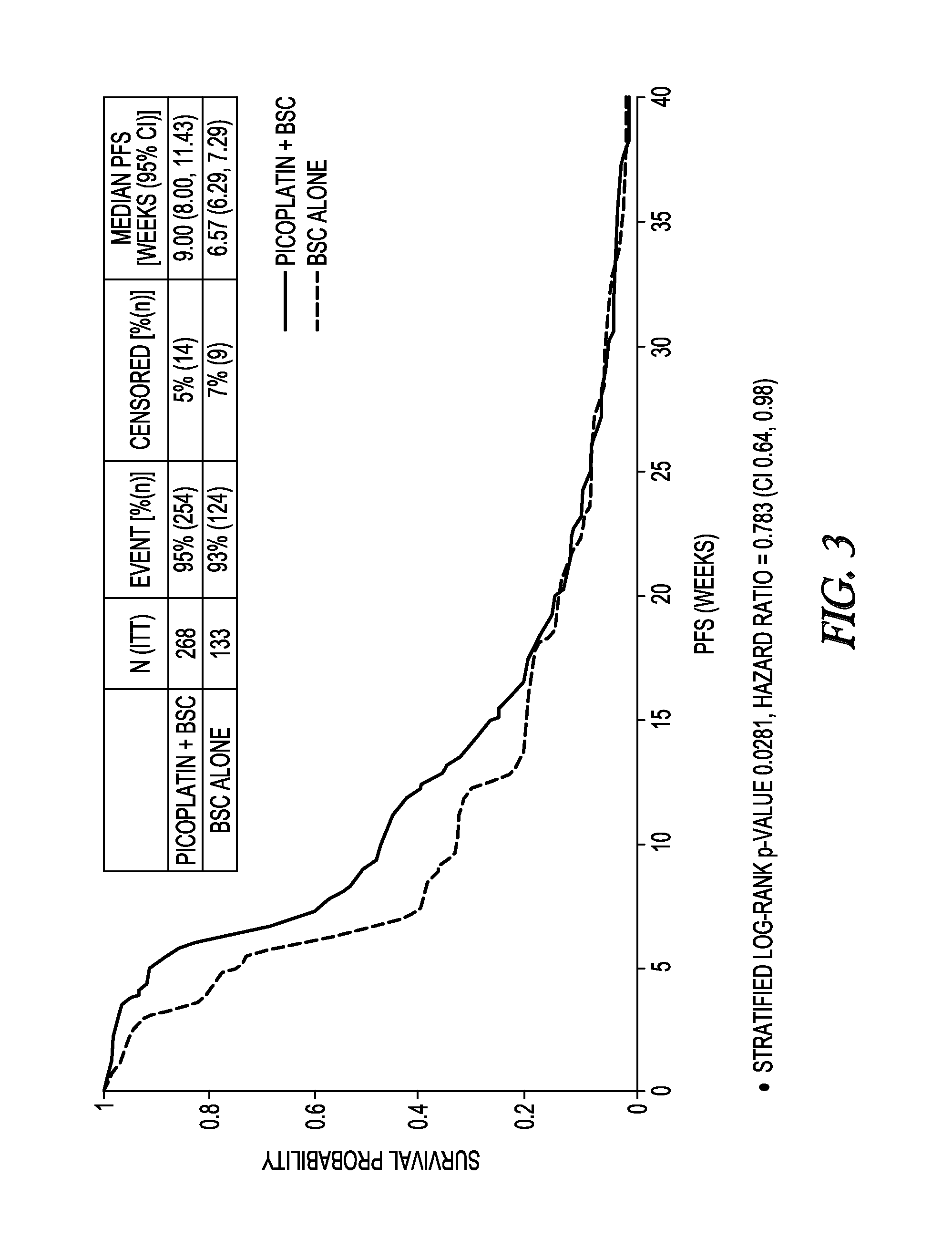Method to treat small cell lung cancer
a lung cancer and small cell technology, applied in the direction of biocide, heavy metal active ingredients, drug compositions, etc., can solve the problems of long-term survival, poor side effects of cisplatin, and patients with more widespread disease, so as to prolong the patient's lifespan or pfs, and increase the probability of survival
- Summary
- Abstract
- Description
- Claims
- Application Information
AI Technical Summary
Benefits of technology
Problems solved by technology
Method used
Image
Examples
example 1
Phase II Study
[0054]A Phase II study of picoplatin monotherapy for patients collectively afflicted with SCLC who have non-responsive SCLC, or SCLC that responds to first-line therapy but then progresses within 90 days of completing first-line therapy, or 91-180 day progressive disease, as defined herein, was carried out. A cohort of 77 patients, who had measurable disease, including 44 whose SCLC was unresponsive to first-line organoplatinum chemotherapy (cisplatin, carboplatin or oxaliplatin) and 27 whose SCLC recurred within 90 days after cessation of first-line therapy, plus 6 patients with 91-180 day progressive SCLC, were treated with picoplatin at a dosage of 150 mg / m2 given intravenously over a period of 1-2 hours every 21 days. Picoplatin was provided as a sterile isotonic 0.5 mg / mL aqueous solution for IV infusion.
[0055]Patients received 1-10 cycles of picoplatin. A median number of dosage cycles of 2, and a mean number of dosage cycles of 3, were administered. Adverse even...
example 2
Phase III study
Introduction
[0064]A Phase III clinical study was carried out to demonstrate median survival superiority of picoplatin monotherapy with best supportive care (BSC) compared to best supportive care alone in non-responsive SCLC patients or in responsive SCLC patients who exhibited progressive disease within 180 days, including refractory and sensitive patients, as defined above.
[0065]Radiological documentation of disease prior to first-line therapy must be available so that the disease status at study baseline can be assessed for protocol eligibility and stratification purposes. The investigator determined eligibility by comparison of chest X-ray or computed tomography (CT) scans obtained prior to, during, and following first-line chemotherapy. During screening, baseline CT or magnetic resonance imaging (MRI) scans were performed for tumor assessment.
[0066]The baseline chest and abdomen computed tomography (CT) scans, including bone windows, were u...
example 3
Treatment of SCLC Brain Metastases
Intracranial Orthotopic SCLC Model
[0188]Picoplatin efficacy was assessed in an orthotopic model of SCLC brain metastasis by Charles River Laboratories, Discovery and Imaging Services, previously known as MIR Preclinical Services, Ann Arbor, Mich. 106 DMS 114 ACLC cells were implanted intracranially in 9-10 week-old female athymic nude mice (outbred nu / nu). Treatment with vehicle or picoplatin (35 mg / kg) began on day 18 at a mean tumor weight of 13 mg with a dosing schedule of Q7DX4. Magnetic resonance imaging (MRI) was used to assess tumor mass and doubling time (Td) twice a week. [18F] fluorothymidine positron emission tomography (FLT PET) was used as an indicator of tumor proliferative index, expressed as the standardized uptake value (SUV), calculated as follows: SUV=(Mean tumor 18F activity (μCi / g)×body weight (g))÷decay-adjusted injected dose (μCi).
[0189]An initial time course for PET (24, 48, and 72 h) was performed to determine optimal post-t...
PUM
| Property | Measurement | Unit |
|---|---|---|
| time | aaaaa | aaaaa |
| time | aaaaa | aaaaa |
| median survival time | aaaaa | aaaaa |
Abstract
Description
Claims
Application Information
 Login to View More
Login to View More - R&D
- Intellectual Property
- Life Sciences
- Materials
- Tech Scout
- Unparalleled Data Quality
- Higher Quality Content
- 60% Fewer Hallucinations
Browse by: Latest US Patents, China's latest patents, Technical Efficacy Thesaurus, Application Domain, Technology Topic, Popular Technical Reports.
© 2025 PatSnap. All rights reserved.Legal|Privacy policy|Modern Slavery Act Transparency Statement|Sitemap|About US| Contact US: help@patsnap.com



